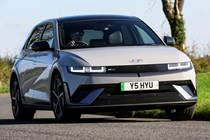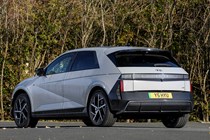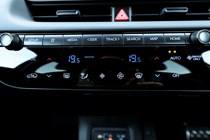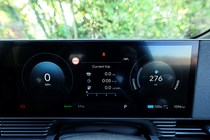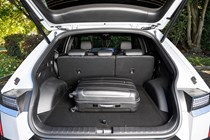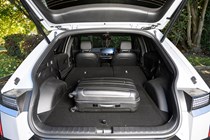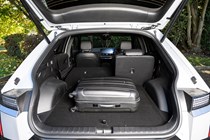
Hyundai Ioniq 5 engines, drive and performance
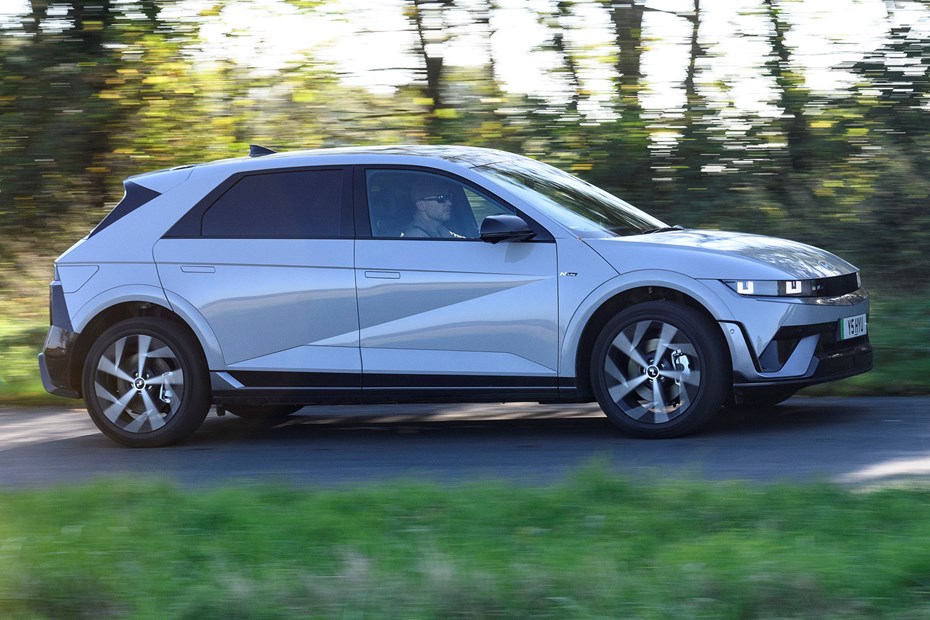
- High-power 325hp option
- Rear- or four-wheel drive
- Standard model sufficiently brisk
What power options are there?
The Hyundai Ioniq 5 has a pretty broad spread of electric motor choices, from a basic 170hp rear-drive version to a really quite powerful 325hp, four-wheel-drive, twin-motor setup. The best option is probably the middle one — a 228hp single-motor rear-drive mode – with a 7.3-second 0-62mph sprint time, it’s certainly brisk enough for most purposes, and feels nicely balanced with the Ioniq 5’s weight and size.
The smaller 170hp motor is hardly disgraced, mind. It actually has the same 350Nm of torque as the more powerful model, so low-down acceleration is almost identical, and its 0-62mph time of 8.5 seconds is hardly a disgrace. The limitation is that this motor is only offered with the smallest battery option.
The top-spec 325hp version uses two motors, with an extra 255Nm of torque coming from the front motor. That’s enough to shove the Hyundai Ioniq 5 84kWh All Wheel Drive model to 62mph in just 5.1 seconds. Of course, if you want true EV thrills, there’s also the 650hp Hyundai Ioniq 5 N, which is covered by its own review.
What’s it like to drive?
- Quiet and refined experience
- Good turning circle
- Facelift has made it more fun
Hyundai has improved things with the 2024 facelift, although it’s not immediately apparent. Once you’re rolling, the 5’s interesting details don’t instantly reveal themselves – it’s quiet, inoffensive and smooth when you’re nipping around town. And quick – Eco mode dulls the accelerator pedal response while, at the other end of the drive mode scale, the dials glare red in Sport and response is instant and impressive.
The steering is responsive and well-weighted – no dead-spots off-centre and tremendously fluid when you wind the lock off after a turn. The turning circle is tight, too; not London taxi tight, but not far off. Then there are the brakes. Unlike many electric cars, the Ioniq 5 has plenty of solid, accurate feel regardless of regeneration level, although there’s less progression and feel than the brilliant set-up in the Renault Scenic E-Tech.
In the 2024 version, you can really have fun with this car on a back road. Adding up the solid mid-range pulling power, sharp steering and responsive brakes is already good enough, but there’s real balance to the chassis, too. Electric cars are by design, heavy – and the Ioniq 5 is no exception, but despite that you can enjoy yourself taking the long route home.
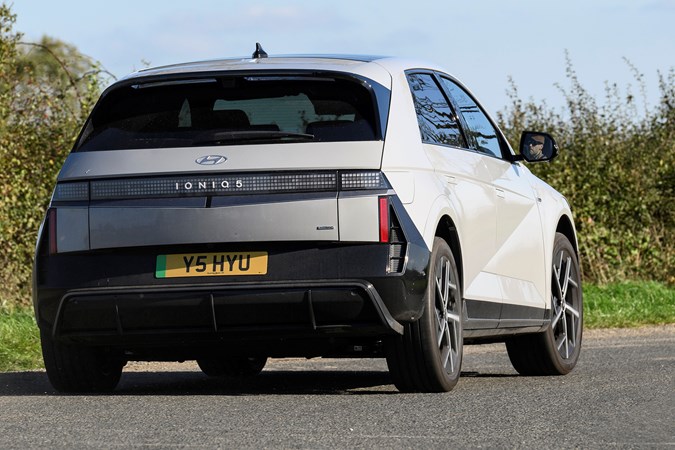
There’s a touch of bodyroll, but the way the suspension handles the Ioniq’s weight is really something to be commended. Despite riding on huge 20-inch wheels, refinement levels are good, with near-zero motor noise, and only a little wind and tyre noise.
Couple this with balanced ride quality – not too jittery, but not waterbed wallowy either – and it’s a very promising position to be in. The final point also worth saying is that sharp ridges in the road surface, such as expansion joints and potholes, are dealt with better than all of its rivals – they thump through, but you don’t get much in the way of reverberation through the seats.
The only thing to be wary of is the size — the Ioniq 5 is 2.1 metres across its mirrors, which means that on a tight back road it feels really big, and that can give you some heart-in-mouth moments when there’s a tractor coming the other way…


